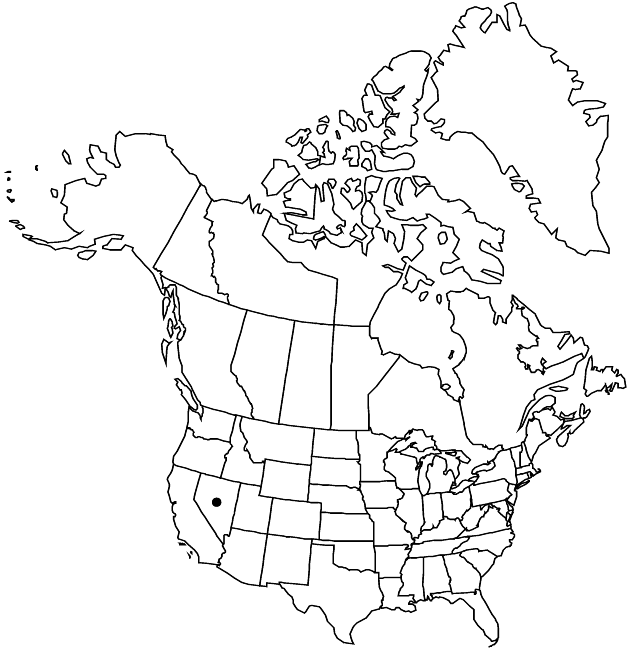Antennaria soliceps
Proc. Biol. Soc. Wash. 51: 7. 1938.
Gynoecious (staminate plants unknown). Plants 1–4 cm. Stolons 0.5–2 cm. Basal leaves 1-nerved, spatulate, rhombic-spatulate, or cuneate, 4–13 × 2–8 mm, tips mucronate, faces densely gray-tomentose. Cauline leaves linear, 4–10 mm, distalmost flagged. Heads usually borne singly, rarely 2–3 in corymbiform arrays. Involucres staminate unknown; pistillate 8–11 mm. Phyllaries distally white, light-brown, dark-brown, or olivaceous. Corollas: staminate unknown; pistillate 4–5.5 mm. Cypselae 1.5–1.8 mm, glabrous; pappi: staminate unknown; pistillate 5–6 mm. 2n = ca. 168.
Phenology: Flowering summer.
Habitat: Talus areas on limestone ridge at treeline in the subalpine zone
Elevation: 3000–3400 m
Discussion
Antennaria soliceps is a high-polyploid apomict known only from limestone talus at treeline in the Spring (Charleston) Mountains, Nevada (R. J. Bayer and T. M. Minish 1993). It is probably most closely related to A. aromatica, an amphimictic species occurring in the northern Rockies, and is characterized by a cushion-plant growth form and heads borne singly (Bayer and Minish).
Selected References
None.
